Abstract
Four patients were found to react to occupational exposure to grinding of hard metal (tungsten carbide). Three of the patients had symptoms and signs compatible with an allergic alveolitis, the symptoms disappearing and the chest radiograph clearing when they were absent from work for a few months. Re-exposure to the offending agent led to new signs and symptoms. The first patient was re-exposed twice and each time reacted a little more seriously. After the last episode her chest radiograph has not cleared completely, in contrast to the first two times. The fourth patient had more typical occupational asthma. All the cases occurred in the part of the factory where air concentrations of cobalt were the lowest. The cobalt there is dissolved in the coolant necessary for grinding the hard metal. It occurs mainly in the ionised form, which is known to react with proteins and therefore presumably acts as a hapten. Protective measures, including choosing a coolant with minimal ability to dissolve cobalt and an effective exhaust system, should minimise the risk of this occupational disease in the future.
Full text
PDF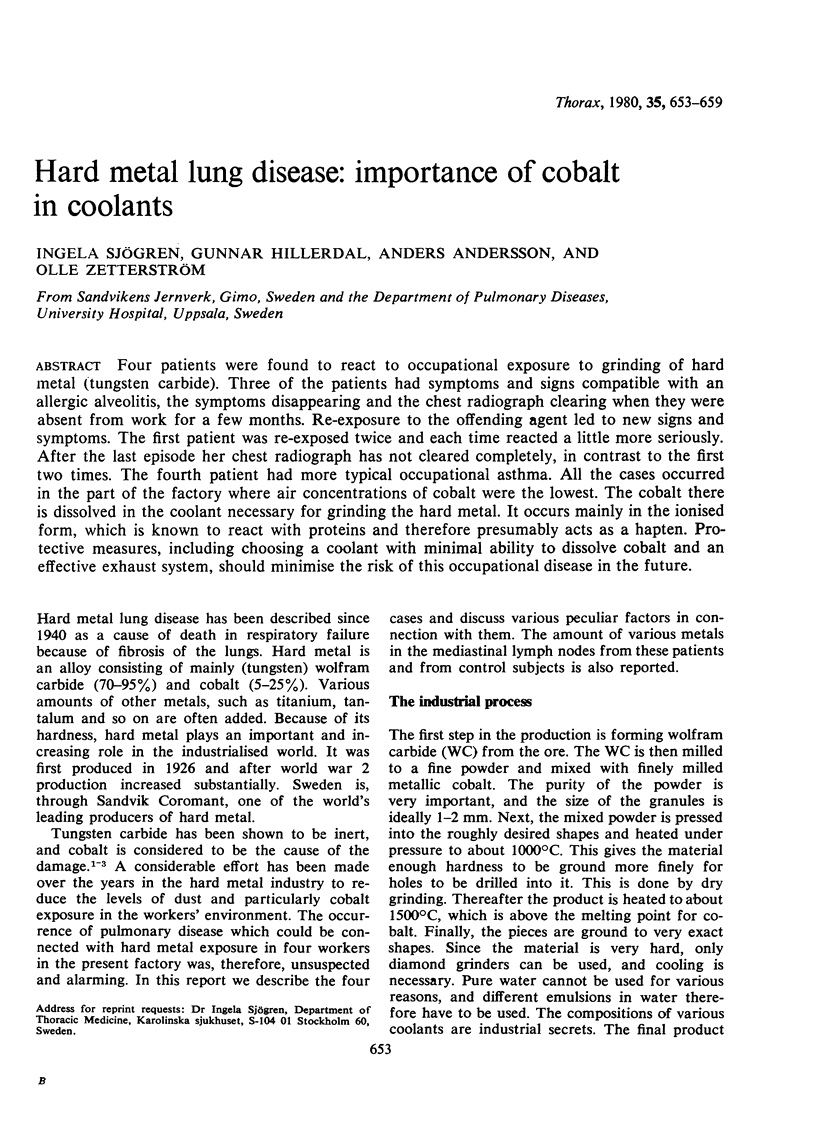
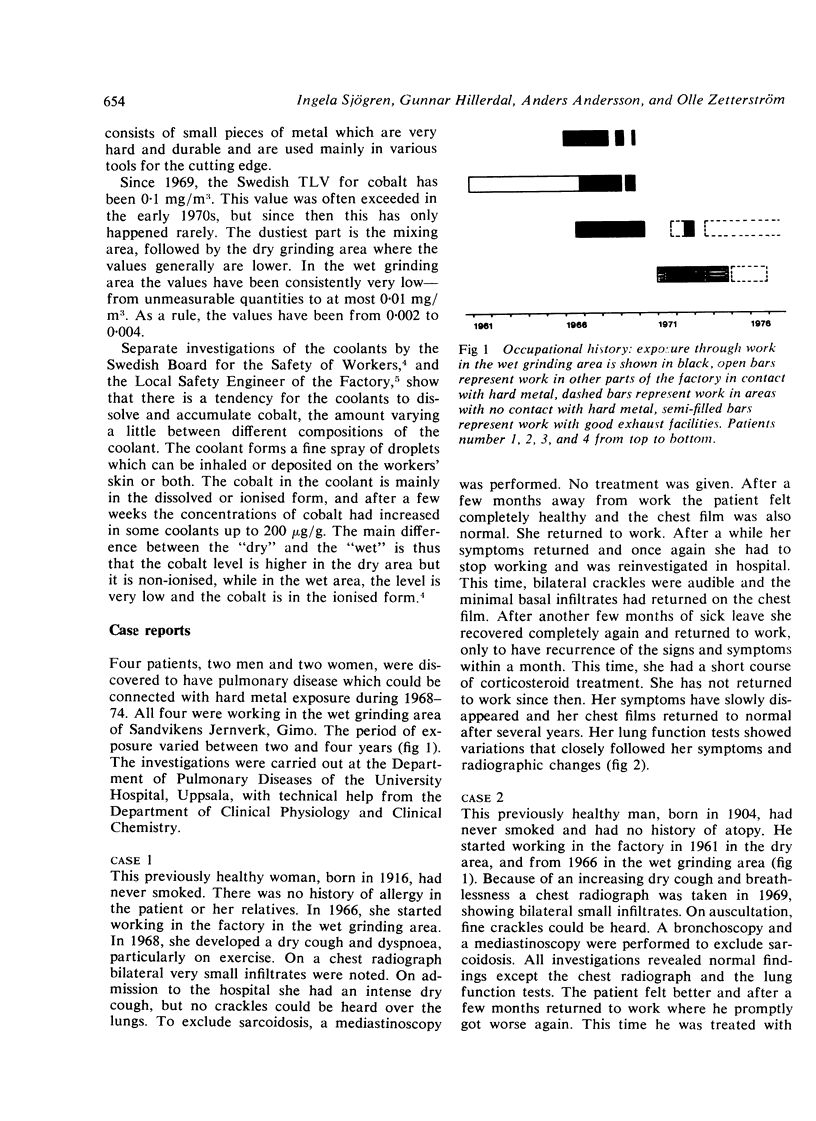
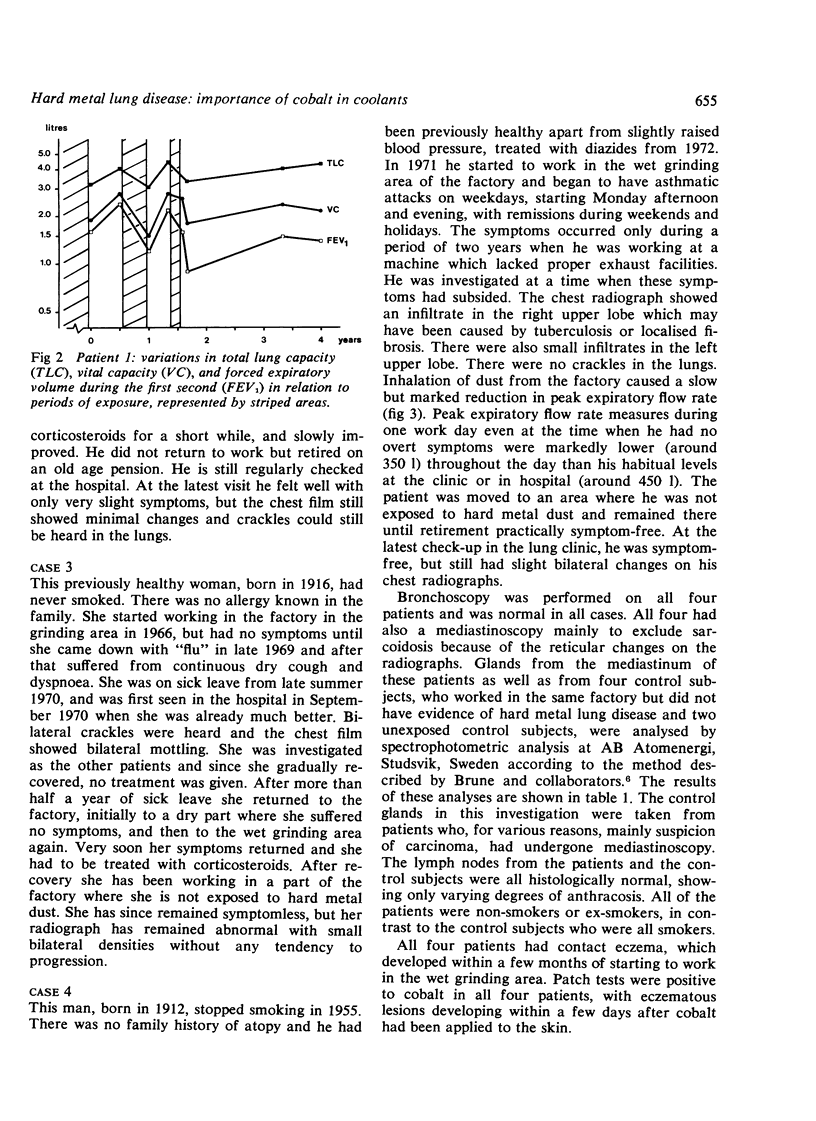
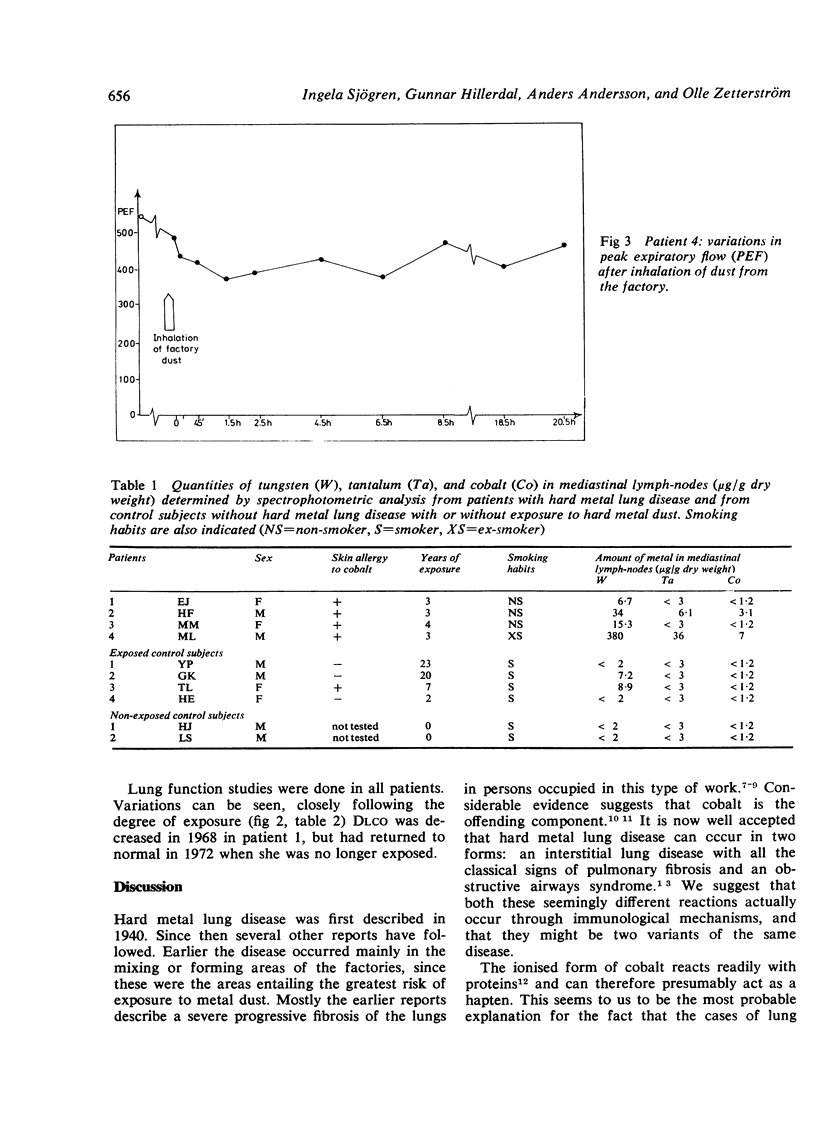
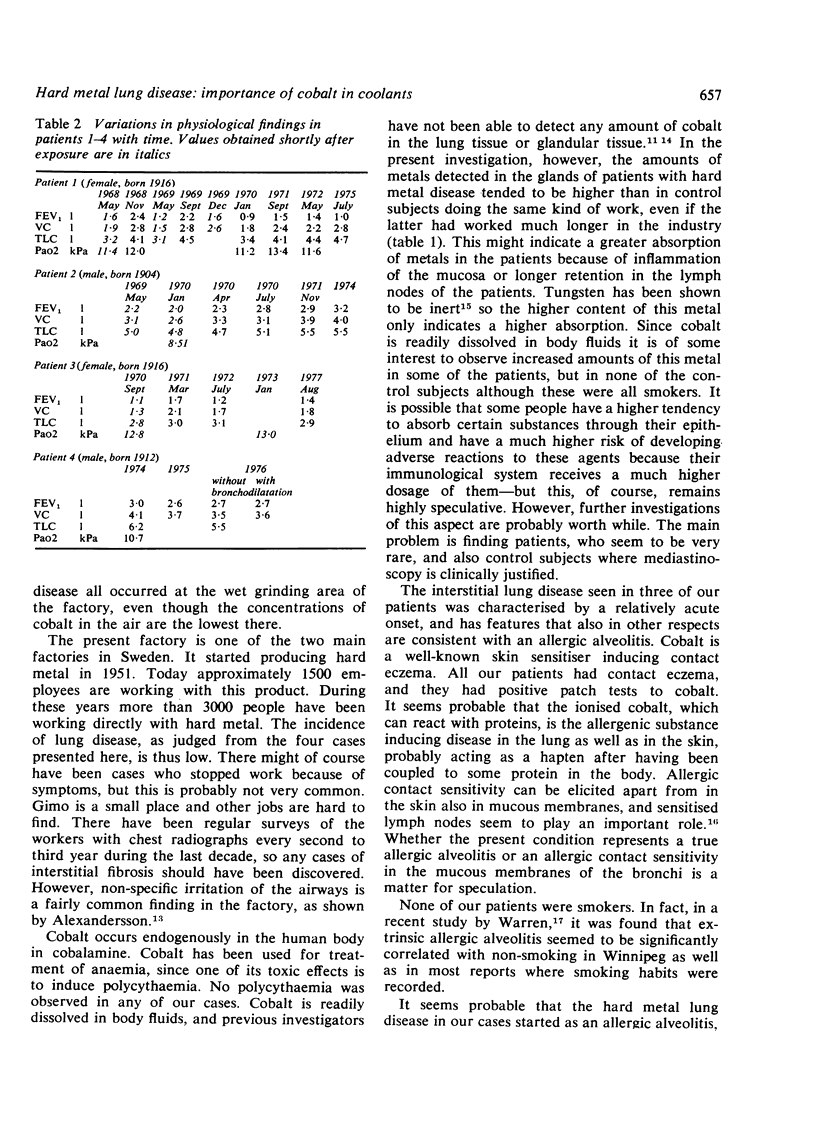
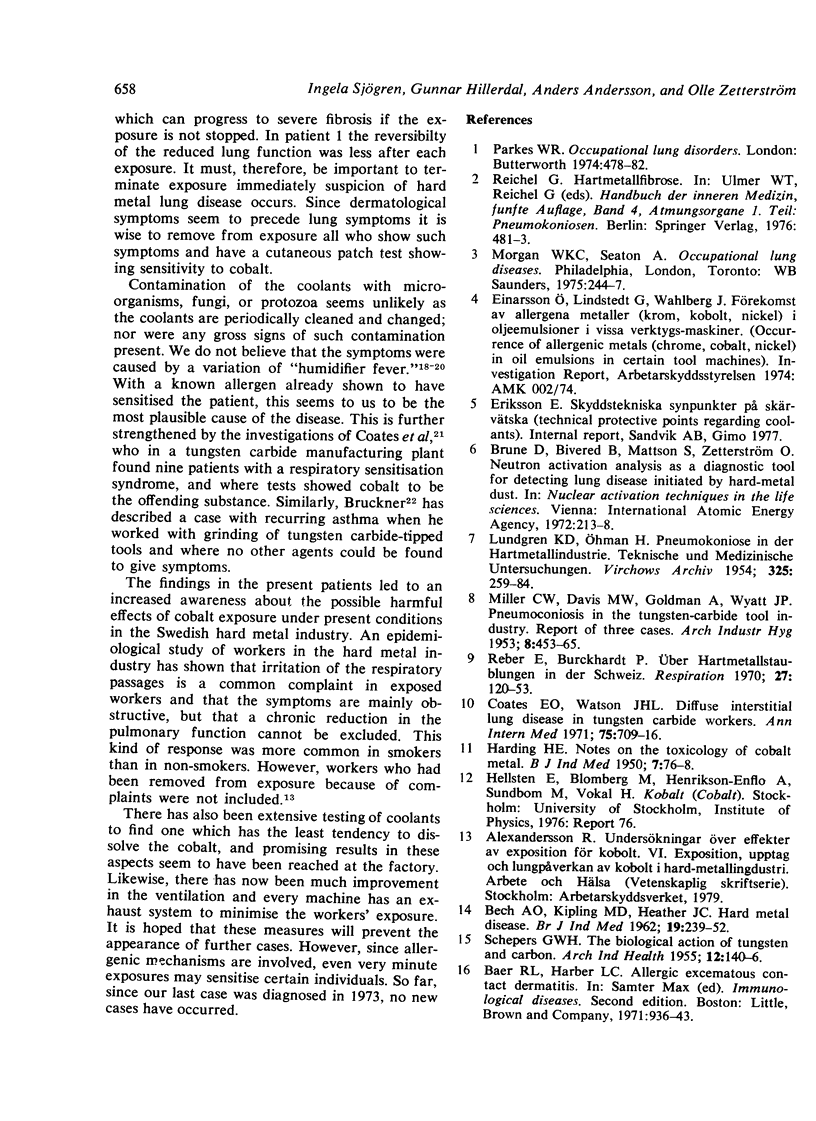
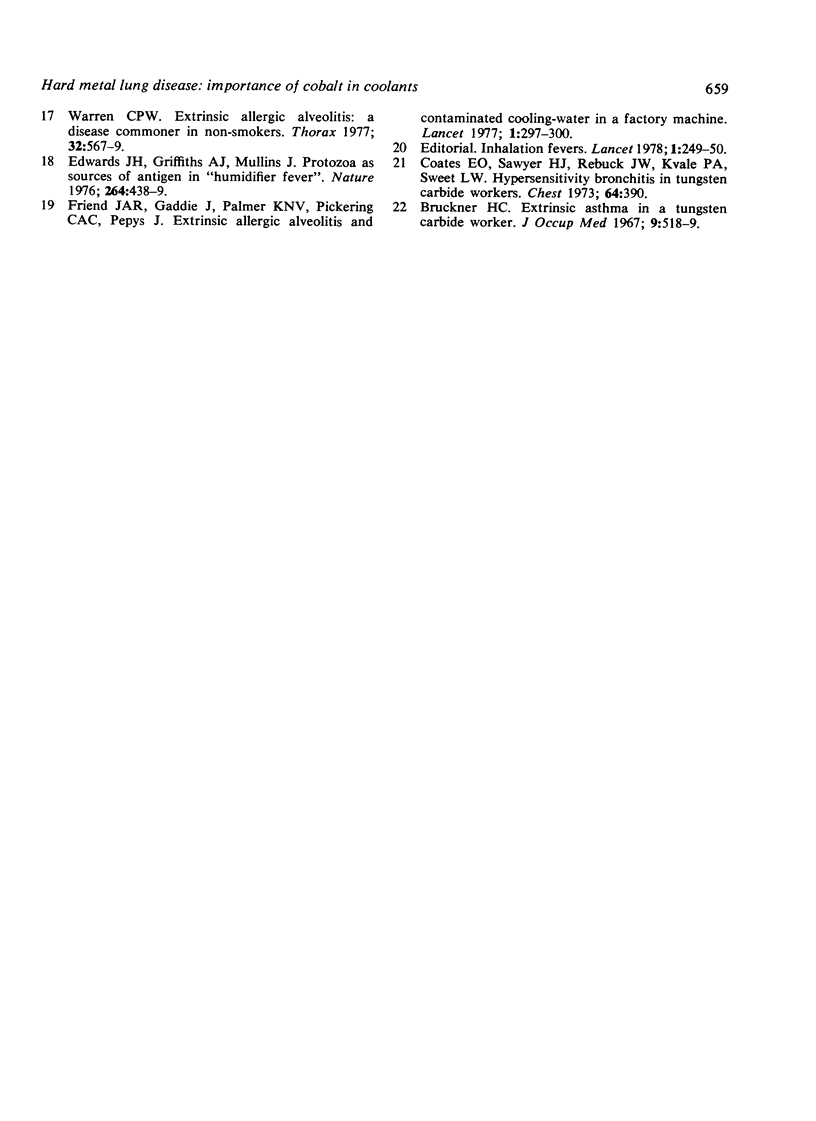
Selected References
These references are in PubMed. This may not be the complete list of references from this article.
- BECH A. O., KIPLING M. D., HEATHER J. C. Hard metal disease. Br J Ind Med. 1962 Oct;19:239–252. doi: 10.1136/oem.19.4.239. [DOI] [PMC free article] [PubMed] [Google Scholar]
- Bruckner H. C. Extrinsic asthma in a tungsten carbide worker. J Occup Med. 1967 Oct;9(10):518–519. doi: 10.1097/00043764-196710000-00006. [DOI] [PubMed] [Google Scholar]
- Coates E. O., Jr, Watson J. H. Diffuse interstitial lung disease in tungsten carbide workers. Ann Intern Med. 1971 Nov;75(5):709–716. doi: 10.7326/0003-4819-75-5-709. [DOI] [PubMed] [Google Scholar]
- Edwards J. H., Griffiths A. J., Mullins J. Protozoa as sources of antigen in 'humidifier fever'. Nature. 1976 Dec 2;264(5585):438–439. doi: 10.1038/264438a0. [DOI] [PubMed] [Google Scholar]
- Friend J. A., Gaddie J., Palmer K. N., Pickering C. A., Pepys J. Extrinsic allergic alveolitis and contaminated cooling-water in a factory machine. Lancet. 1977 Feb 5;1(8006):297–300. doi: 10.1016/s0140-6736(77)91839-6. [DOI] [PubMed] [Google Scholar]
- HARDING H. E. Notes on the toxicology of cobalt metal. Br J Ind Med. 1950 Apr;7(2):76–78. doi: 10.1136/oem.7.2.76. [DOI] [PMC free article] [PubMed] [Google Scholar]
- LUNDGREN K. D., OHMAN H. Pneumokoniose in der Hartmetallindustrie; technische und medizinische Untersuchungen. Virchows Arch Pathol Anat Physiol Klin Med. 1954;325(3):259–284. doi: 10.1007/BF00958447. [DOI] [PubMed] [Google Scholar]
- MILLER C. W., DAVIS M. W., GOLDMAN A., WYATT J. P. Pneumoconiosis in the tungsten-carbide tool industry; report of three cases. AMA Arch Ind Hyg Occup Med. 1953 Nov;8(5):453–465. [PubMed] [Google Scholar]
- Reber E., Burckhardt P. Uber Hartmetallstaublungen in der Schweiz. Respiration. 1970;27(2):120–153. doi: 10.1159/000192677. [DOI] [PubMed] [Google Scholar]
- SCHEPERS G. W. The biological action of tungsten carbide and cobalt; studies on experimental pulmonary histopathology. AMA Arch Ind Health. 1955 Aug;12(2):140–146. [PubMed] [Google Scholar]
- Warren C. P. Extrinsic allergic alveolitis: a disease commoner in non-smokers. Thorax. 1977 Oct;32(5):567–569. doi: 10.1136/thx.32.5.567. [DOI] [PMC free article] [PubMed] [Google Scholar]


